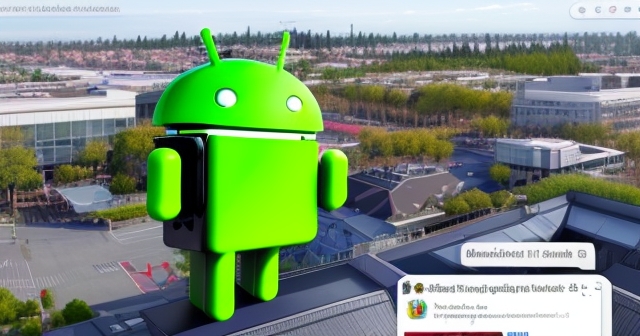
Google Buys Android: The $50 Million Acquisition That Changed Mobile Forever
Table of Contents
ToggleGoogle’s Android Acquisition: A $50 Million Bet That Reshaped the Digital World
Welcome, aspiring investors and seasoned traders. Today, we delve into a story not of stock charts and technical indicators, but of strategic vision, market dynamics, and an investment that is widely considered one of the most successful in technology history. We’re going to explore Google’s seemingly modest 2005 acquisition of a small startup called Android Inc. At the time, it might have barely registered on Wall Street’s radar. Yet, this quiet transaction, costing an estimated $50 million, would fundamentally alter the trajectory of mobile computing, redefine Google’s business, and create a digital empire that now touches billions of lives globally. What can we learn from this masterstroke, and how does understanding such pivotal moments inform our broader view of markets and technology? Let’s unpack this remarkable story together.
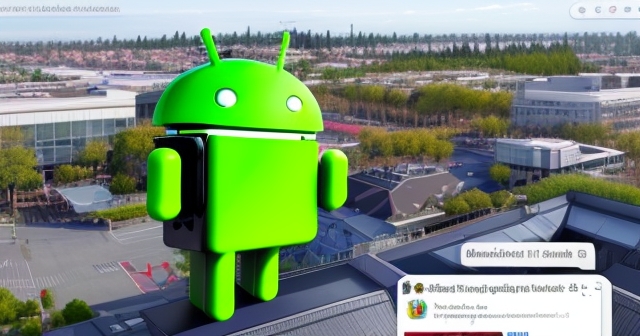
Every giant has a genesis, and Android’s starts in a far less glamorous place than you might imagine. Android Inc. was founded in Palo Alto, California, in October 2003 by four individuals with diverse backgrounds but a shared vision for the future of mobile technology: Andy Rubin, Rich Miner, Nick Sears, and Chris White. Andy Rubin, already a notable figure in the tech world for co-founding Danger Inc. (the company behind the T-Mobile Sidekick, a precursor to modern smartphones), led the charge. Their initial ambition wasn’t even focused solely on mobile phones; sources suggest their early idea was to develop an operating system for digital cameras, aiming to create a more intelligent, connected camera experience. Imagine a world where your digital camera could do more than just snap photos – that was the germ of an idea. However, the digital camera market proved to be challenging, and the team quickly pivoted, recognizing the burgeoning potential and limitations of the mobile phone landscape of the early 2000s. At this time, mobile operating systems were fragmented, often clunky, and tightly controlled by carriers and hardware manufacturers like Nokia (Symbian), BlackBerry, and Microsoft (Windows Mobile). The Android Inc. team saw an opportunity to build a more flexible, powerful, and open platform.
- Android Inc. was founded by four individuals with diverse backgrounds.
- Initial focus was on creating an operating system for digital cameras.
- Recognized the potential of mobile phones over digital cameras in the early 2000s.
Despite their pedigree and vision, Android Inc. faced the universal challenge of any startup: securing funding. They operated relatively quietly, developing their core technology, but by 2005, they were reportedly struggling financially. Funding rounds were difficult, and the future looked uncertain. They were a small team with a big idea but limited resources in a highly competitive, established market dominated by giants. Think of them as a small skiff trying to navigate a sea filled with battleships. They needed a lifeline, a partner with the resources and strategic foresight to see the value in their foundational work and propel it forward. This precarious situation set the stage for an unexpected turn that would change everything.
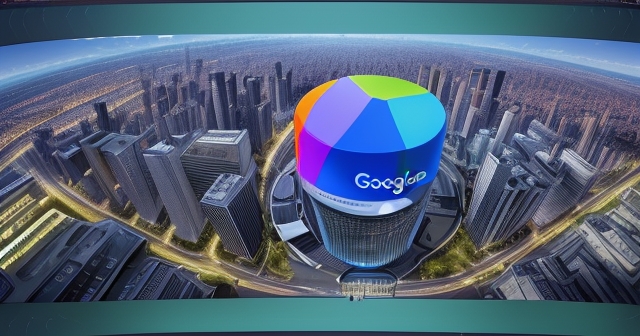
Meanwhile, Google, having gone public in a highly anticipated IPO in August 2004, was a rapidly expanding internet search and advertising giant. Their core business was desktop search, a world where users primarily accessed information through web browsers on personal computers. However, forward-thinking leaders within Google, including co-founders Larry Page and Sergey Brin, recognized a fundamental shift was coming. The internet was moving beyond the desktop. Mobile phones were becoming more powerful, more connected, and increasingly capable of accessing the web. If Google wanted to maintain its dominance in search and advertising, it needed a strong presence on these emerging mobile devices. They couldn’t afford to be locked out or dependent on the whims of mobile carriers and existing OS providers who might prioritize their own services.
Google had already dipped its toes into mobile efforts, working on wireless search and other initiatives since the early 2000s. But they lacked a comprehensive mobile platform strategy. Building an operating system from scratch is an incredibly complex, time-consuming, and expensive undertaking. It requires deep technical expertise in low-level software, hardware integration, and ecosystem development. Acquiring a company that had already done significant foundational work on a mobile OS presented a faster, more efficient path to market. Google wasn’t just buying code; they were buying talent, vision, and a head start in a critical new frontier. They saw Android Inc. not for its current state, but for its potential – a blank canvas upon which they could paint the future of mobile computing, ensuring Google’s services would remain central to how people accessed the internet on their phones.
The acquisition itself was a relatively quiet affair when it happened. Google announced that it had acquired Android Inc. in August 2005, though the deal is reported to have closed the previous month, in July. The official price was not disclosed at the time, leading to speculation. However, estimates widely place the acquisition cost at around $50 million. Now, for a company like Google, even back in 2005, $50 million was not a negligible sum, but it was far from their largest acquisition ever. Consider that Google spent an estimated $130 million on total acquisitions in 2005, making Android a significant but not dominant piece of that spending. Compared to future deals, like the $1.65 billion acquisition of YouTube in 2006 or the massive $12.5 billion purchase of Motorola Mobility in 2011, $50 million seems almost trivial in retrospect.
| Acquisition | Year | Cost | Significance |
|---|---|---|---|
| YouTube | 2006 | ~$1.65 Billion | Established dominance in online video. |
| DoubleClick | 2007 | ~$3.1 Billion | Cornerstone of advertising technology. |
| Motorola Mobility | 2011 | ~$12.5 Billion | Aquision for patents and hardware expertise. |
The key wasn’t just the price, but who came with the deal. Google didn’t just buy assets; they acquired the core Android Inc. team, including Andy Rubin and his co-founders. This was crucial. They integrated this small, focused team into Google’s operations, giving them the resources and backing they needed to fully realize their vision. It was a strategic talent acquisition as much as a technology one. The quiet nature of the announcement also speaks volumes. The mobile landscape was intensely competitive, and Google likely preferred to develop their mobile strategy somewhat under the radar before making a grand public debut. This allowed the integrated Android team within Google to focus on development without immediate intense scrutiny from competitors or the market, giving them valuable time to build the platform that would eventually challenge and overtake the incumbents.
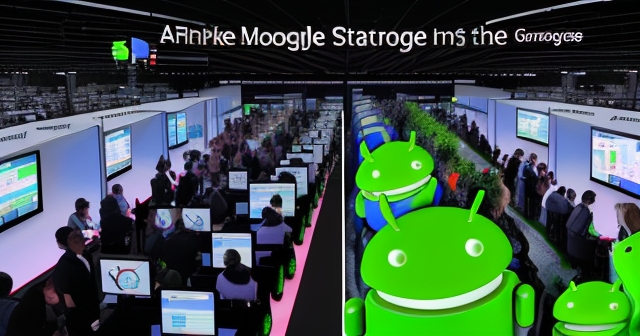
Following the acquisition, the Android team, now part of Google, embarked on a critical development phase. For approximately three years, from mid-2005 to late 2008, they worked diligently to transform their initial concept and codebase into a full-fledged, production-ready mobile operating system. This wasn’t just refining the existing work; it involved significant development, integration with Google’s own services, and designing a platform that could appeal to a wide range of hardware manufacturers and mobile carriers. It required navigating complex technical challenges related to performance, power consumption, hardware compatibility, and user interface design in the constrained environment of mobile devices.
A pivotal decision during this phase was the commitment to an open-source model, or at least a hybrid approach leveraging open source. Android is fundamentally based on a modified version of the Linux kernel, a highly stable and widely adopted open-source foundation. The core of the platform, the Android Open Source Project (AOSP), is available under permissive licenses. This was a strategic move. By making the core OS open, Google lowered the barrier to entry for hardware manufacturers (like HTC, Samsung, Motorola, and eventually many others) and mobile carriers. They could take the AOSP code, customize it for their hardware, add their own software layers (like manufacturer UIs – think Samsung’s One UI or HTC’s Sense), and differentiate their products. This fostered rapid adoption and fragmentation initially, but it allowed Android to quickly gain traction across a diverse range of devices and markets, overcoming the challenge of getting just one or two hardware partners on board.

After years of development under wraps, Android made its public debut. Google, along with partners in the newly formed Open Handset Alliance (OHA) – an industry group committed to developing open standards for mobile devices – unveiled the Android platform in November 2007. However, the first actual device running Android didn’t hit the market until nearly a year later. On October 22, 2008, the T-Mobile G1, manufactured by HTC (known as the HTC Dream in some markets), was released. This was the pioneering Android device. Looking back at the T-Mobile G1 today, it seems almost primitive – a chunky slider phone with a physical keyboard and a small touchscreen. But it was revolutionary. It was the first mass-market device running a truly modern, open, internet-centric mobile operating system, backed by the power of Google.
At the time of its launch, the mobile OS market was dominated by Symbian (on Nokia phones), BlackBerry OS, Apple’s iOS (which had launched with the iPhone in 2007 and was quickly gaining popularity, though on a single device), and Windows Mobile. Android was the underdog. Skeptics questioned whether an open-source OS, especially one associated with a search company, could compete against established players and the sleek, tightly controlled ecosystem of the iPhone. Early versions of Android were functional but lacked some of the polish and features of competitors. The Android team knew they had a long road ahead. They needed to iterate quickly, expand their features, and convince manufacturers and consumers that this new platform was the future. The race was on, and Google was determined to win it.
What followed the launch of the T-Mobile G1 was a period of explosive growth for Android. The open nature of the platform proved to be its greatest strength. Unlike Apple’s iOS, which was exclusive to Apple’s own hardware (the iPhone, iPad, etc.), Android could be adopted by any hardware manufacturer. Companies around the world, eager to compete in the nascent smartphone market without building their own OS from scratch, flocked to Android. Samsung, HTC, Motorola, LG, Huawei, Xiaomi, and countless others began producing a vast array of Android devices at different price points and form factors. This proliferation of devices, spanning budget-friendly phones to high-end flagships, allowed Android to reach consumers globally, rapidly gaining market share. Carriers also favored Android phones due to the variety of hardware options and the ability to customize the software.
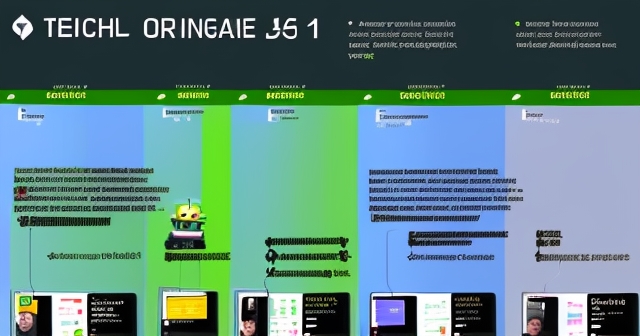
Within a few years, Android systematically overtook its competitors. Symbian faded as Nokia struggled to adapt. BlackBerry focused too narrowly on its niche. Windows Phone, despite Microsoft’s significant efforts, failed to gain meaningful traction. Android’s market share surged. By the mid-2010s, it had become the world’s dominant mobile operating system. Current estimates, varying slightly depending on the source and the specific quarter, place Android’s global smartphone market share somewhere between 70% and 85%. Think about that for a moment. For every ten smartphones sold worldwide, seven to eight of them are running Android. This level of market penetration is astounding. Beyond smartphones, Android has expanded its reach to tablets, smart TVs (Android TV), smartwatches (Wear OS), cars (Android Automotive), and other connected devices. The ecosystem now includes over 3 billion active devices monthly. This ubiquity makes Android not just an operating system, but a fundamental part of the global digital infrastructure, a primary gateway for billions to access the internet, communicate, and interact with digital services.
While the open-source Android Open Source Project (AOSP) provided the foundation and enabled widespread hardware adoption, a critical element of Android’s success and Google’s strategy is the proprietary layer built on top: Google Mobile Services (GMS). GMS includes core Google applications and services like the Google Play Store, Google Search, Gmail, Google Maps, YouTube, Chrome, Google Play Services (a crucial API layer for developers), and more. For most Android devices sold outside of China, GMS is pre-installed and licensed from Google. Hardware manufacturers that want to include GMS on their devices must meet compatibility requirements and agree to Google’s terms, which typically include bundling Google’s apps and setting Google Search as the default. This dual strategy – an open core (AOSP) to maximize reach and a proprietary layer (GMS) to control the user experience and monetize the platform – has been incredibly effective for Google.
The GMS ecosystem is the primary mechanism through which Google monetizes the Android platform. While Google doesn’t directly charge users or generally hardware manufacturers for the core Android OS itself, the vast user base on GMS-enabled devices generates immense value through advertising and other services. Users on Android phones use Google Search, watch YouTube, use Gmail, and download apps from the Play Store – all activities that directly or indirectly generate revenue for Google (now Alphabet). The Play Store itself generates revenue through app sales and in-app purchases (though this is shared with developers). The data generated from billions of Android users provides valuable insights that enhance Google’s advertising targeting and other services. Essentially, Android became the pipes through which Google could deliver its revenue-generating services to the vast majority of the world’s mobile users. It transformed Google from primarily a desktop search company into a mobile-first powerhouse.
Now, let’s talk numbers, because this is where the Android acquisition moves from being just a strategic success to a financial phenomenon. Remember that estimated $50 million acquisition cost back in 2005? Compare that to the revenue streams and strategic value Android has unlocked for Google over the past decade and a half. Mobile advertising, driven largely by the massive reach of Android devices (and to a lesser extent, iOS devices using Google’s services), is a multi-billion dollar business for Alphabet. While Google doesn’t break out Android-specific revenue outside of Play Store earnings, analysts estimate that the revenue generated through search ads, display ads, and other monetization methods on Android devices contributes tens, if not hundreds, of billions of dollars annually to Google’s top line. Alphabet’s total advertising revenue is well over $100 billion per year, and a significant, growing portion of that originates on mobile.
| Metric | Value |
|---|---|
| Estimated Acquisition Cost | $50 Million |
| Annual Advertising Revenue from Android | Tens of Billions |
| Global Smartphone Market Share | 70% – 85% |
Consider the Return on Investment (ROI). If Google spent $50 million and that investment eventually contributes billions annually, the ROI is not just high; it’s off the charts, perhaps unlike any other acquisition in corporate history. It’s difficult to put an exact percentage on it, but the initial investment has likely been repaid hundreds, if not thousands, of times over through the direct and indirect revenue streams enabled by the platform’s dominance. Strategic value is harder to quantify in dollars, but it’s equally immense. Android ensured Google’s relevance in the mobile age, prevented competitors from locking Google out of the most important computing platform shift since the PC, and created a powerful ecosystem that reinforces Google’s other businesses. Without Android, Google’s position in the global digital economy would be far weaker. As David Lawee, who oversaw Google’s mergers and acquisitions at the time, reportedly said years later, the Android acquisition was Google’s “best deal ever.” Given the numbers and the strategic outcome, it’s hard to argue with that assessment.
To truly appreciate the magnitude of the Android acquisition’s success, it’s helpful to put it in context alongside Google’s other notable M&A activities. Google has been an active acquirer of companies throughout its history, from small talent acquisitions to multi-billion dollar purchases. Let’s look at a few significant examples provided in our data:
- YouTube (Acquired 2006, ~$1.65 Billion): A massive success, establishing Google’s dominance in online video. Yields billions in ad revenue annually. High ROI, but the initial cost was significantly higher than Android.
- DoubleClick (Acquired 2007, ~$3.1 Billion): A cornerstone of Google’s advertising technology infrastructure. Essential for its ad business growth. High strategic value and financial return, but again, a much larger initial investment.
- Motorola Mobility (Acquired 2011, ~$12.5 Billion; largely sold to Lenovo in 2014 for ~$2.9 Billion): Primarily an acquisition for patents and hardware expertise to bolster Android’s position and potentially compete with Apple’s integrated model. While it served strategic purposes, the financial return was negative on the hardware side, and the patent value is hard to isolate. Clearly not the ROI success of Android.
- Nest Labs (Acquired 2014, ~$3.2 Billion): Google’s entry into the smart home market. Has grown into a significant product line, but the scale and financial impact are nowhere near that of Android.
- Fitbit (Acquired 2021, ~$2.1 Billion): A move into the wearables and health tracking market. Strategic for the ecosystem, but a much smaller play compared to Android.
Compared to these deals, the $50 million outlay for Android stands out dramatically. While companies like YouTube and DoubleClick were also incredibly successful and generated massive returns, their initial price tags were orders of magnitude higher than Android’s. The sheer return *relative to the initial investment* makes Android the unparalleled champion in Google’s acquisition history. It’s a powerful lesson that sometimes the most transformative investments are not necessarily the largest ones, but those that are strategically timed and unlock access to entirely new, massive growth markets.
Android’s immense success and dominant market share have, however, come with significant challenges, particularly in the form of antitrust scrutiny and regulatory reviews around the globe. When a single platform controls such a large percentage of a critical market (mobile operating systems are the gateway to the digital economy for most people), regulators and competitors inevitably raise concerns about competition, choice, and fair play. The primary area of focus for antitrust authorities has been the bundling of Google Mobile Services (GMS) with the Android operating system.
Because hardware manufacturers typically want to include popular Google apps like the Play Store and Gmail on their devices to make them appealing to consumers, they must license the GMS suite from Google. Critics and regulators argue that the terms of these GMS licenses, which often require manufacturers to pre-install a specific set of Google apps prominently and set Google Search as the default, unfairly favor Google’s own services and hinder competition from alternative apps (like competing search engines, browsers, or app stores) and even alternative Android forks that don’t include GMS (like Amazon’s Fire OS or attempts in China by companies like Huawei). This practice is seen by some as leveraging dominance in one area (the OS) to gain advantages in others (search, apps, advertising). Governments and regulatory bodies in Europe, India, the United States (including reviews by the Department of Justice and Federal Trade Commission), and elsewhere have launched investigations, issued fines, and mandated changes to Google’s practices related to Android and GMS bundling. This ongoing scrutiny represents a significant challenge for Google, potentially impacting how it can monetize and control its most important platform in the future. It serves as a reminder that unprecedented success often attracts unprecedented regulatory attention.
Conclusion: A Landmark Investment and Its Lingering Questions
In closing, the story of Google’s acquisition of Android Inc. is a compelling case study in strategic foresight, value creation, and the often-unpredictable nature of technological evolution. For a mere estimated $50 million, Google acquired the foundational technology and, more importantly, the visionary team that would go on to build the world’s dominant mobile operating system. This was not just about getting into the mobile game; it was about shaping it entirely, ensuring Google’s continued relevance and expanding its core business into the pocket of billions.
The return on investment has been staggering, a financial triumph that dwarfs Google’s other successful multi-billion dollar acquisitions when viewed in terms of relative cost and impact. Android is the engine driving a significant portion of Google’s advertising revenue and forms the backbone of its ecosystem strategy, encompassing everything from search and maps to hardware like Pixel phones and watches. It transformed Google into the mobile giant it is today.
Yet, the very success that has made Android so valuable also presents its greatest challenge. Its near-ubiquitous market share and the tightly controlled GMS ecosystem have placed Google squarely in the crosshairs of antitrust regulators worldwide. The battles over bundling, default services, and market access are ongoing and will likely continue to shape the future of the platform and Google’s business practices for years to come. What does this monumental acquisition, its incredible success, and its subsequent regulatory challenges teach us? It underscores the importance of timing and vision in strategic investments, the power of platforms in the digital age, and the complex interplay between innovation, market dominance, and public policy. As investors and traders, understanding such foundational shifts and the forces that drive them – from visionary startups to global regulatory bodies – is crucial for navigating the ever-evolving landscape of technology and finance.
google buys androidFAQ
Q:What was the motivation behind Google’s acquisition of Android?
A:Google sought to strengthen its position in the mobile market and gain a competitive edge by acquiring an established mobile operating system.
Q:How much did Google pay for Android?
A:Google’s acquisition of Android was reported to be around $50 million.
Q:What impact did Android have on Google’s revenues?
A:Android has significantly contributed to Google’s advertising revenues, generating tens to hundreds of billions annually since its launch.
You may also like
Calendar
| 一 | 二 | 三 | 四 | 五 | 六 | 日 |
|---|---|---|---|---|---|---|
| 1 | 2 | 3 | 4 | 5 | 6 | 7 |
| 8 | 9 | 10 | 11 | 12 | 13 | 14 |
| 15 | 16 | 17 | 18 | 19 | 20 | 21 |
| 22 | 23 | 24 | 25 | 26 | 27 | 28 |
| 29 | 30 | 31 | ||||
發佈留言
很抱歉,必須登入網站才能發佈留言。